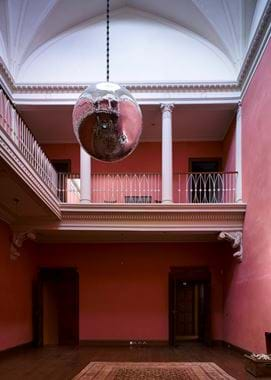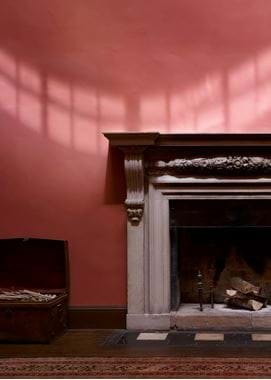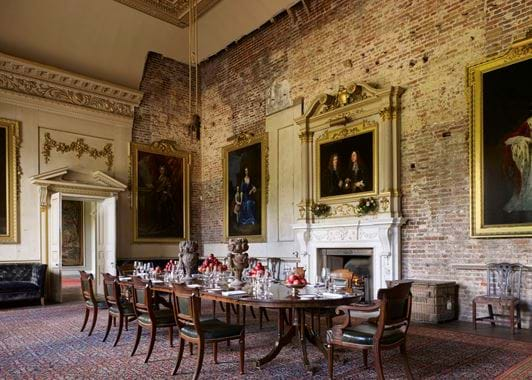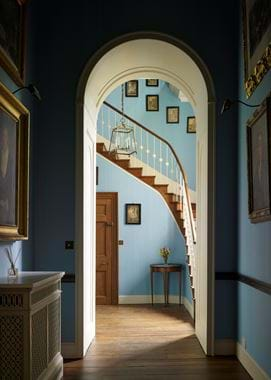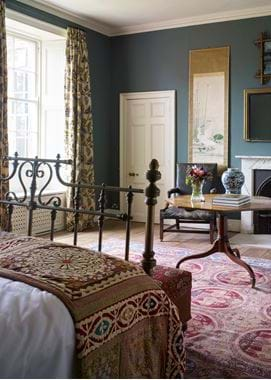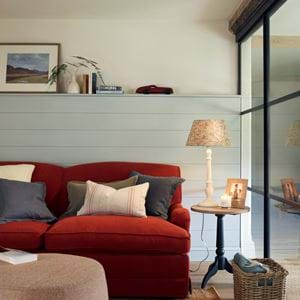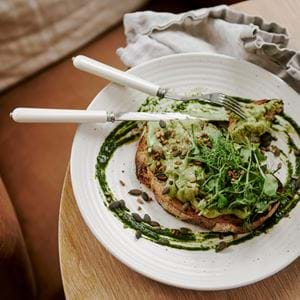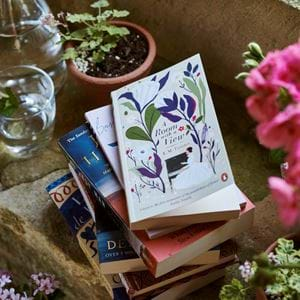Inspired by the past: Britain’s most influential interiors
Inspired by the past: Britain’s most influential interiors
Stuck for decorating ideas or are you just a bit of a history buff? Britain’s historic houses will provide all the ideas you’ll ever need, says Country Life’s Giles Kime.
Instagram, Pinterest and the pages of magazines offer a treasure trove of interior inspiration. But look a little further and there’s plenty more to be found. Walking through a beautifully decorated house, shop or stylish hotel allows you to experience, at first hand, the distinctive character and mood of an inspiring interior. How colours react to light, how the spaces relate and how individual elements such as furniture and artwork are knitted together to create a coherent feel. Perhaps most important of all, they offer living examples of how you can inject character and personality into a space.
There’s another resource right under our noses that can offer an even deeper understanding of how and why great rooms work. In Britain, we have a higher proportion of much loved, painstakingly preserved historic houses than anywhere in the world. Each is a living example of how beautiful colours, furniture, textiles and artwork contribute to the look and feel of a space. Some are in the care of the National Trust, others of English Heritage, while plenty still remain in private or charitable hands. Of the latter, many are members of Historic Houses and they range from those that you may have heard of, such as Chatsworth, Althorp and Holkham, to smaller houses that are only open to the public on an occasional basis or which can be used as the setting for weddings, events or filming. The great attraction of these houses is a distinctive personality thanks to having been in the ownership of the same families for centuries, while others have been acquired more recently by those with a passion for their past. It’s the owners who use them on a daily basis who bring them to life, just as they were brought to life by those who lived there when they were first built. The fact that they are still privately owned gives them a distinctive feel that makes them as relevant to the 21st century as they were in centuries past.
A house that delivers inspiration in astonishing quantities is St Giles House in Dorset, home of the 40-year-old Earl of Shaftesbury. When the former DJ and music promoter inherited the house 15 years ago, it was in an advanced state of decay. In 2010, he and his wife, Dinah, decided to make it their family home and embarked on a brave plan to bring it back to life. What is perhaps most remarkable about the project is that the couple haven’t attempted to return it to the way that it might have been in 17th or 18th centuries, top-to-toe in perfect paint finishes and plasterwork, and instead have left parts of it pretty much as they found it, albeit clean, dry and warm. In other rooms, it’s possible to see exposed brick and the structure of the ceiling laid bare. The couple’s bedroom has the same timeworn paint that they found in the house when they arrived, and it lends a wonderfully evocative mood of another era.
In the newly restored Riding House a stone’s throw from St Giles House, guests can sleep in luxuriously appointed stables that – with the exception of plumbing and furniture – remain pretty much the same as they would have been when the building was constructed in the 17th century. The result is a succession of spaces that reveal their history in a startling way and demonstrate how houses can be restored without losing the character that has been created by the passage of time.
Not all the properties that are part of Historic Houses are as extravagant in scale. Columbine Hall in Suffolk is a moated medieval manor that, for almost a quarter of a century, has been a labour of love for its owners Hew Stevenson and Lesley Geddes Brown, a journalist, author and former deputy editor of Country Life magazine. Together, they have sympathetically restored its interior, the surrounding formal gardens and 28 acres of orchards, woods, and bog land. The house is typical of how historic houses can be made relevant to modern life: the couple offer their magnificent timbered barn as a venue for weddings and parties, and the old stables have been converted to holiday accommodation for six guests. In addition, they offer regular guided tours of both the house and the gardens. Like St Giles House, its simple, sympathetically restored interiors offer plenty of ideas for the inquisitive visitor.
It’s these constantly evolving houses that not only offer an intimate experience of the past but also living examples of how period spaces can create comfortable family homes – and, in many cases, thriving businesses. Their fascinating architecture and decorating offers a wealth of inspiration to any visitor hungry for ideas.
Make a day of it
When visiting a Neptune store, you might consider combining your trip with a visit to an inspiring Historic House property nearby. Many of the larger houses are open every day, all year round while others offer a limited number of tours. Some have more than others on their doorstep; for example, Neptune’s store in Chester has the following gems within easy reach: Arley Hall, Adlington Hall, Bromley Hall, Cholmondley Castle, Dorfold Hall, Henbury Hall, Peover Hall, and Tatton Park. Historic House’s website has a nifty search facility that will highlight its member properties within reach of any UK location. historichouses.org
All the photos you’ll spot here were taken at St Giles House, a restored family home near the village of Wimborne St Giles in Dorset.

